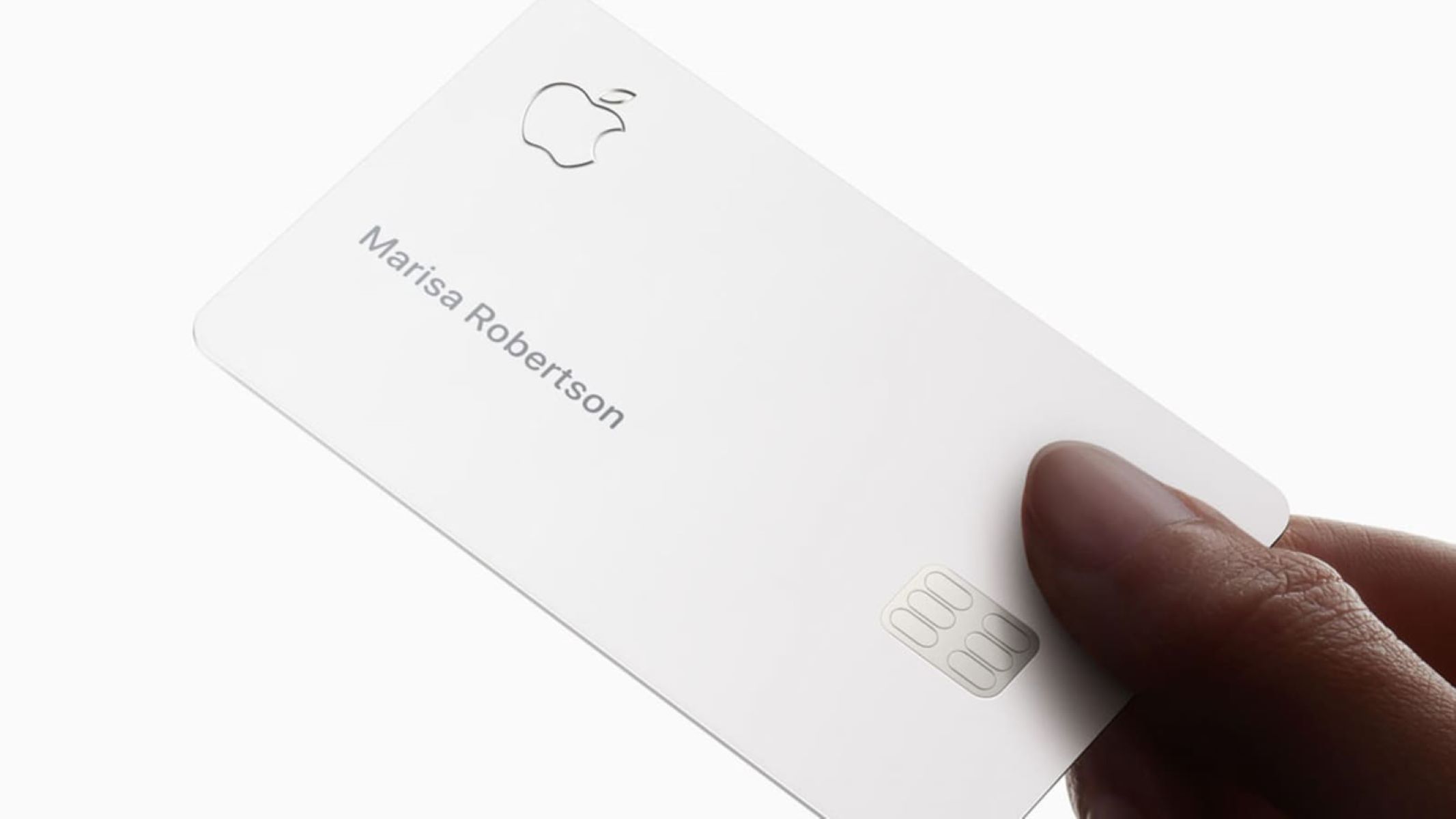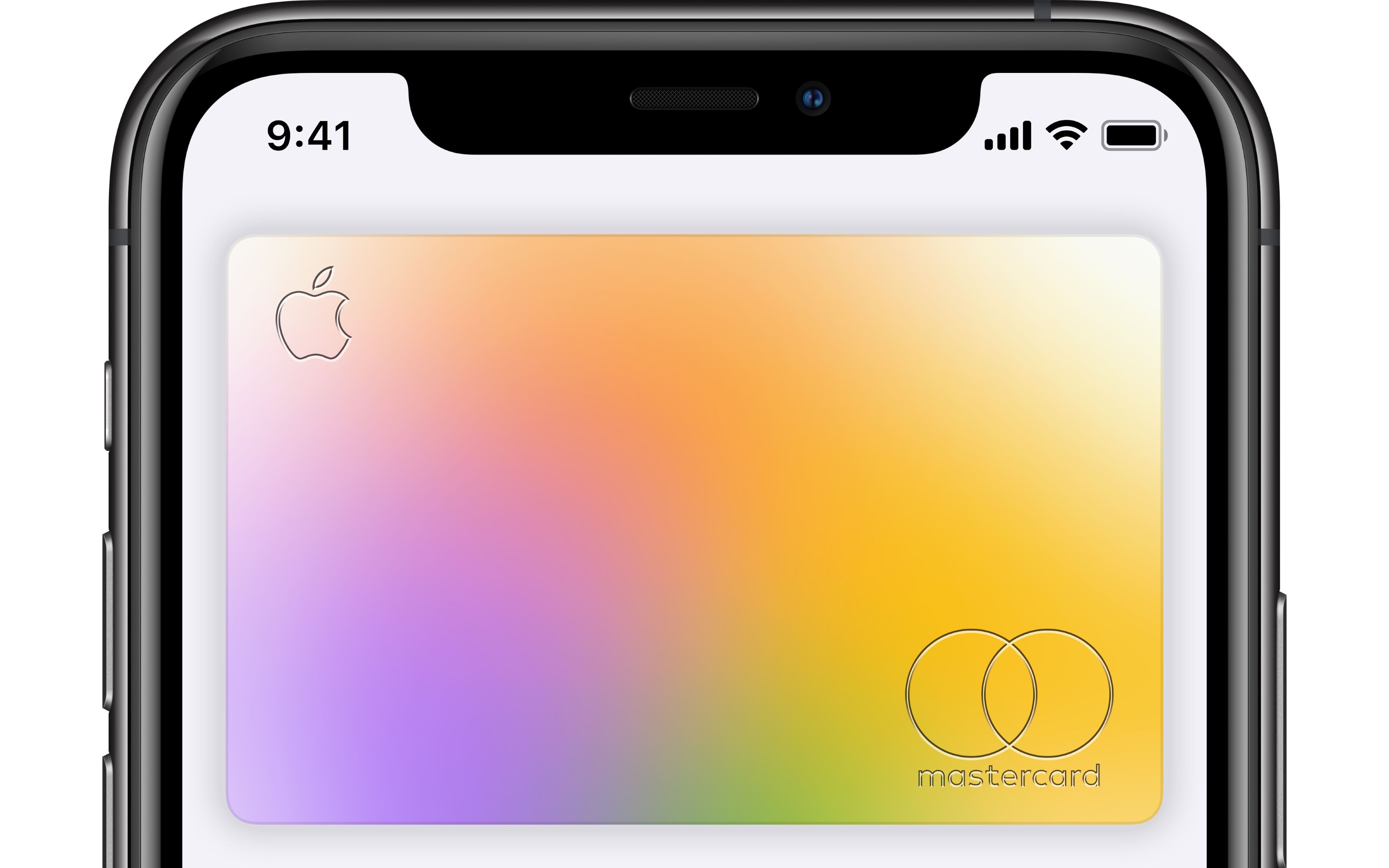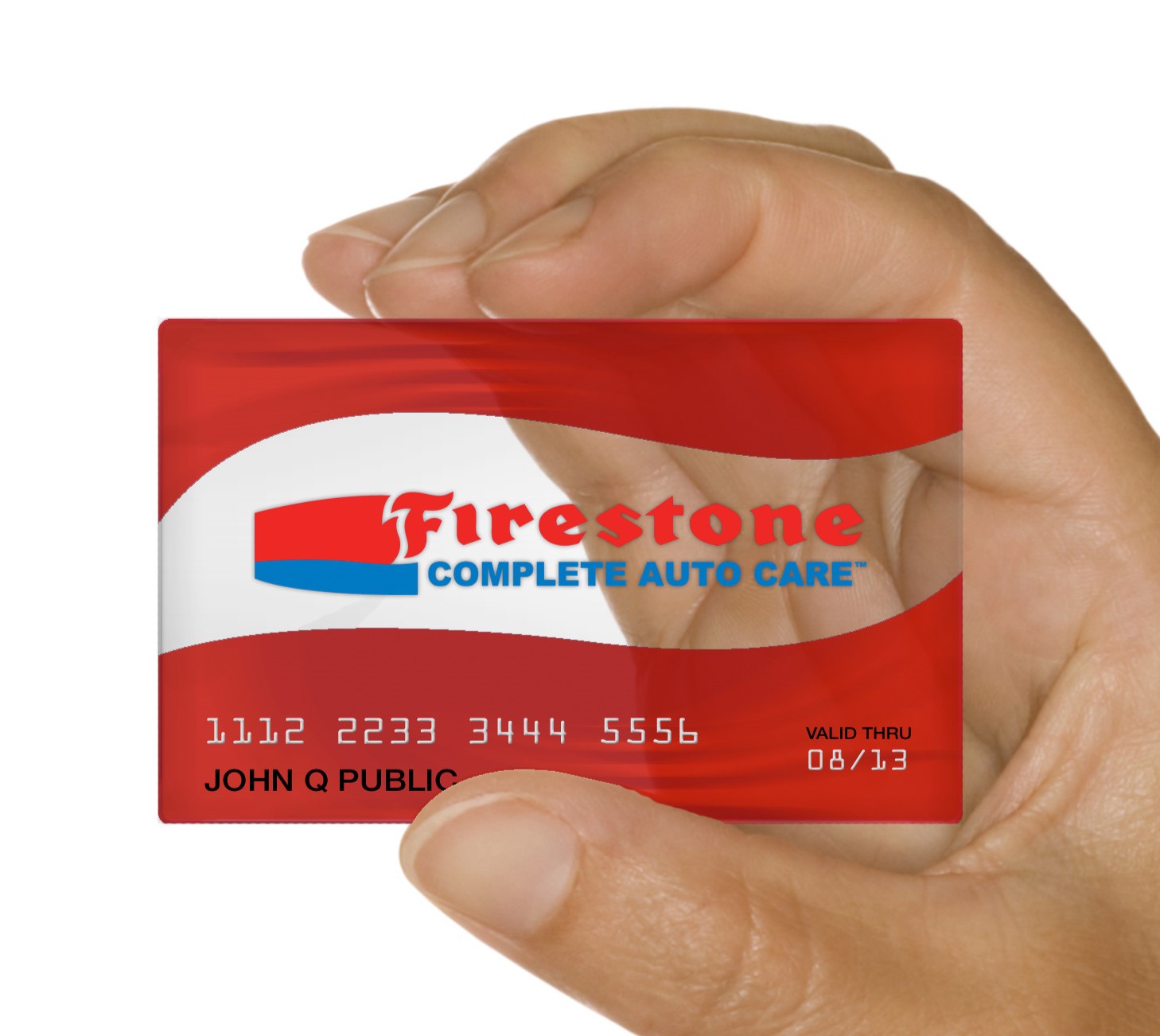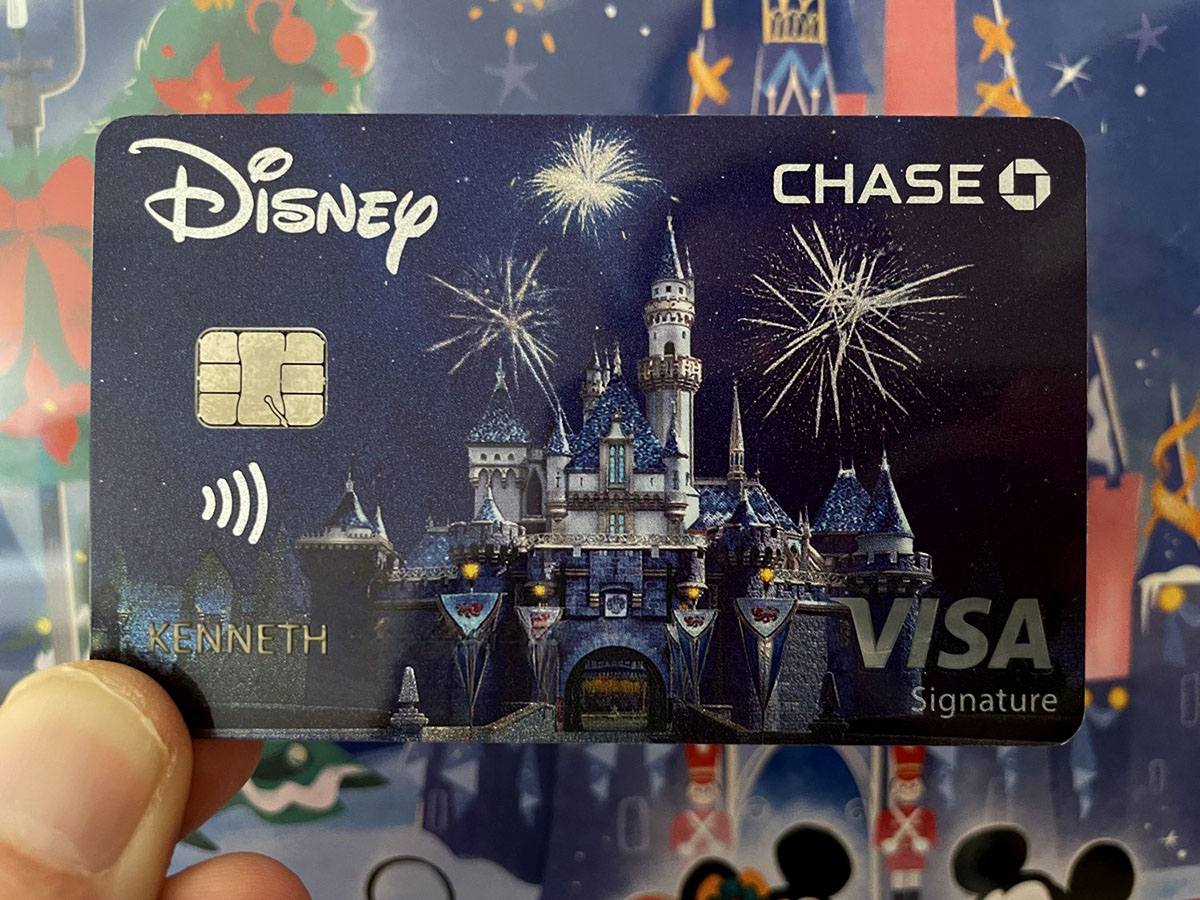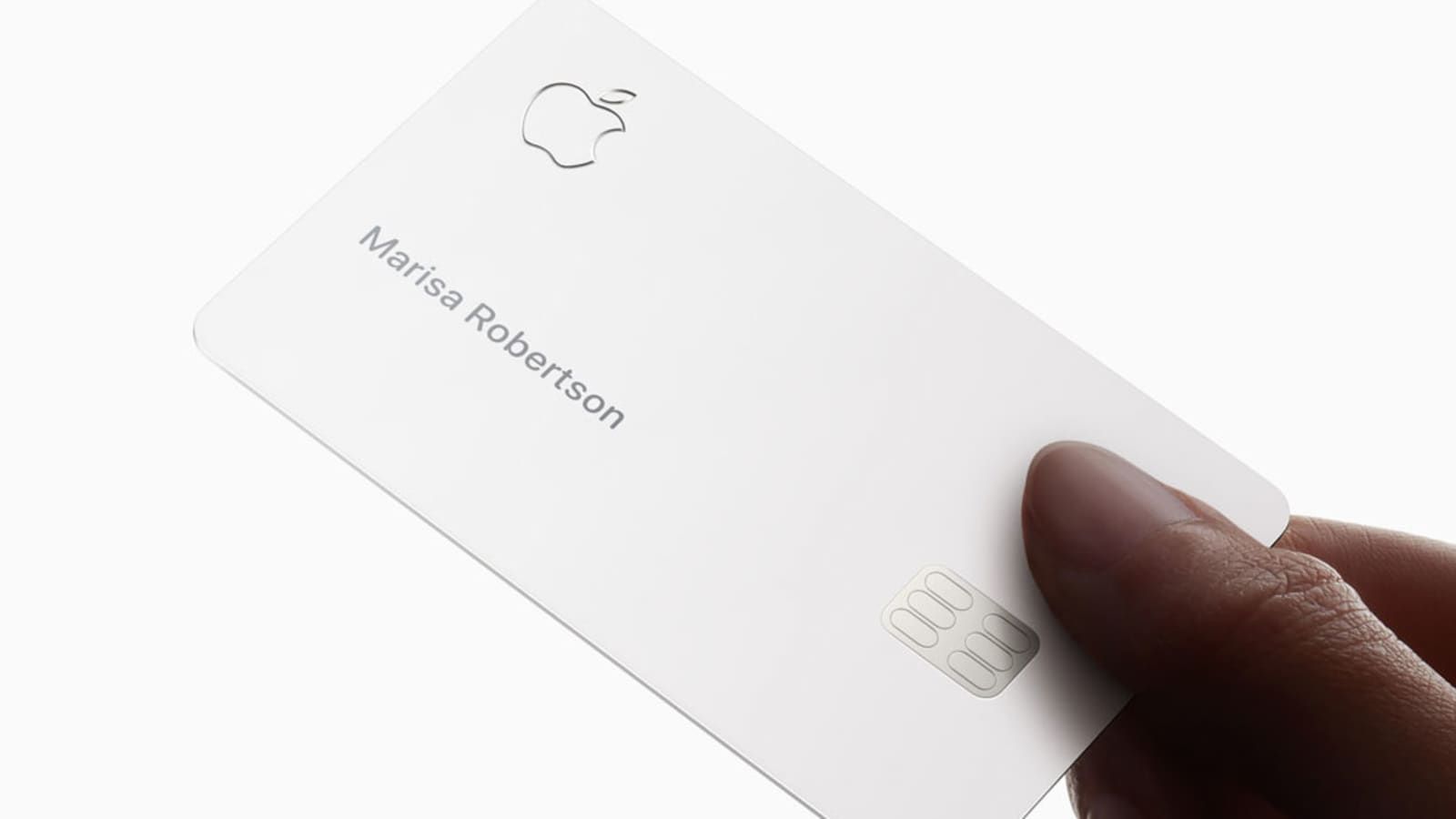

Finance
What Credit Score Is Needed For The Apple Card
Modified: February 21, 2024
Looking to get the Apple Card? Learn what credit score you need to qualify and improve your chances of approval. Explore finance options today!
(Many of the links in this article redirect to a specific reviewed product. Your purchase of these products through affiliate links helps to generate commission for LiveWell, at no extra cost. Learn more)
Table of Contents
- Introduction
- What is the Apple Card?
- How Does the Apple Card Work?
- Benefits of the Apple Card
- Factors Considered for Apple Card Approval
- Credit Score Requirements for the Apple Card
- Minimum Credit Score needed for the Apple Card
- How to Improve your Credit Score for Apple Card Approval
- Alternatives to the Apple Card
- Conclusion
Introduction
In today’s digital age, credit cards have become an essential tool for managing personal finances. With a multitude of credit card options available in the market, it can be overwhelming to choose the right one. However, there is one credit card that has attracted significant attention and buzz since its launch – the Apple Card.
The Apple Card, introduced by Apple in collaboration with Goldman Sachs, offers a unique blend of simplicity, security, and innovative features. It aims to revolutionize the credit card industry by combining cutting-edge technology with user-friendly design.
Whether you’re an Apple enthusiast or simply looking for a credit card that stands out from the crowd, you might be wondering what credit score is needed to qualify for the Apple Card. In this article, we will delve into the credit score requirements for the Apple Card and provide valuable insights on how to improve your credit score for a better chance of approval.
Before we dive into the credit score specifics, let’s take a closer look at what the Apple Card is and how it works.
What is the Apple Card?
The Apple Card is a credit card designed specifically for Apple users. It is a collaboration between Apple and Goldman Sachs, offering a seamless integration with Apple’s ecosystem of products and services. The card is part of Apple’s broader initiative to expand its presence in the financial industry and provide its customers with a comprehensive and innovative banking experience.
With its sleek and minimalist design, the physical Apple Card is made of titanium and bears only the cardholder’s name – no card number, expiration date, or CVV code. This approach enhances security and privacy, as all transaction details can be accessed through the Wallet app on the user’s iPhone. The virtual card is stored securely in the Apple Wallet, allowing users to make payments using Apple Pay, both online and in-store.
One of the standout features of the Apple Card is its focus on transparency and simplicity. The card has no annual fees, no foreign transaction fees, and no over-limit fees. Apple also provides a clear breakdown of transactions, categorizing them by color-coded spending categories such as food and drinks, entertainment, shopping, and more. This allows users to easily track their spending and make informed financial decisions.
In addition to its user-friendly interface, the Apple Card offers robust security features. Each transaction is authorized using Face ID or Touch ID, ensuring that only the cardholder can access and use the card. Furthermore, the card generates a unique security code for every payment, adding an extra layer of protection.
With its combination of style, simplicity, security, and seamless integration into Apple’s ecosystem, the Apple Card has gained popularity among tech-savvy individuals and Apple enthusiasts. Now that we understand what the Apple Card is, let’s explore how it works.
How Does the Apple Card Work?
The Apple Card works in conjunction with your iPhone and the Apple Wallet app, allowing for a seamless and convenient payment experience. Here’s a breakdown of how the Apple Card works:
- Application Process: To apply for the Apple Card, you need to have an iPhone running on iOS 12.4 or later. The application process is straightforward, with a simple application form that can be completed directly from your iPhone. Once you submit your application, you’ll receive a response within minutes.
- Integration with Apple Wallet: If your application is approved, the Apple Card is automatically added to your Apple Wallet. You can access your physical card details, transaction history, and payment options directly from the Wallet app on your iPhone.
- Making Purchases: With the Apple Card, you have the option to make purchases both online and in-store. When using Apple Pay, simply hold your iPhone close to the contactless payment terminal and authenticate your purchase with Face ID or Touch ID. For in-store transactions where Apple Pay is not available, you can use your physical Apple Card, which has a chip for chip-and-pin transactions as well as a magnetic stripe for traditional swipe payments.
- Tracking Spending: The Wallet app provides a user-friendly interface to track and manage your spending. Each transaction is categorized by color-coded spending categories, allowing you to see how much you spend on different types of purchases. The app also provides a monthly spending summary, which can be a helpful tool for budgeting and managing your personal finances.
- Monthly Statements: The Apple Card provides detailed monthly statements that can be accessed directly from the Wallet app. The statement includes a summary of your transactions, interest charges (if any), and payment due date. You can choose to make minimum payments or pay the full balance each month.
- Cashback Rewards: The Apple Card offers a unique rewards program called Daily Cash. With every purchase made using Apple Pay, you earn a percentage of the transaction amount back as Daily Cash. The cashback rewards can be used towards future purchases, sent to friends and family through Apple Pay, or transferred to your bank account.
By leveraging the power of your iPhone and the integration with Apple’s ecosystem, the Apple Card provides a seamless payment experience and a plethora of features to help you better manage your finances. Now that we have explored how the Apple Card works, let’s move on to the benefits it offers.
Benefits of the Apple Card
The Apple Card offers a range of benefits that set it apart from traditional credit cards. Let’s take a closer look at some of the key advantages of owning an Apple Card:
- Seamless Integration: With its integration into the Apple Wallet app, the Apple Card provides a seamless and intuitive payment experience. You can easily manage your card, track your spending, and make payments all from one central location on your iPhone.
- No Fees: Unlike many credit cards, the Apple Card has no annual fees, no foreign transaction fees, and no over-limit fees. This can save you money and make it a more cost-effective option for your everyday purchases.
- Daily Cashback Rewards: One of the standout features of the Apple Card is its Daily Cash rewards program. With each purchase made using Apple Pay, you earn a percentage of the transaction amount back as Daily Cash. This cashback can be used for future purchases or transferred to your bank account.
- Clear and Transparent Interface: The Apple Card provides a user-friendly interface that categorizes your transactions by color-coded spending categories. This allows you to easily track your spending habits and make more informed financial decisions.
- Enhanced Security Features: Apple is known for its emphasis on privacy and security, and the Apple Card is no exception. Each transaction is authorized using Face ID or Touch ID, ensuring only you can access and use your card. The card also generates a unique security code for each transaction, adding an extra layer of protection.
- Financial Health Tools: The Wallet app provides useful tools to help you monitor your financial health. It offers spending summaries, payment due reminders, and interest calculations. These features can help you stay on top of your finances and make responsible choices.
- Customer Support: Apple offers 24/7 customer support for Apple Card users. You can contact their support team directly from the Wallet app if you have any questions or need assistance with your card.
These benefits make the Apple Card an attractive option for those who value simplicity, transparency, and the seamless integration of technology into their everyday financial transactions. Now that we have explored the benefits of the Apple Card, let’s discuss the factors considered for Apple Card approval.
Factors Considered for Apple Card Approval
When applying for the Apple Card, there are several factors that are taken into consideration by Goldman Sachs, the issuer of the card. While the exact approval criteria are not publicly disclosed, understanding the factors that may influence your application can help you better prepare. Here are some of the key factors that are likely considered:
- Credit Score: Your credit score plays a significant role in determining your eligibility for the Apple Card. A higher credit score indicates a lower credit risk and may increase your chances of approval. While there is no specific minimum credit score requirement disclosed by Apple or Goldman Sachs, a good to excellent credit score is generally recommended.
- Credit History: Along with your credit score, your credit history is also evaluated. Lenders typically review factors such as the length of your credit history, the types of credit you have, and your payment history. A positive and consistent credit history can improve your chances of getting approved for the Apple Card.
- Income Level: Your income is an essential consideration for credit card approval. Lenders assess your income to ensure that you have the financial capacity to repay your debts. A higher income can increase your chances of approval, as it demonstrates a stronger ability to make timely payments.
- Debt-to-Income Ratio: Your debt-to-income ratio is another critical factor that lenders consider. This ratio compares your monthly debt obligations to your monthly income. A lower ratio indicates a healthier financial situation and may increase your likelihood of being approved for the Apple Card.
- Employment Status: Your employment status and stability are typically taken into account. Lenders may consider factors such as the length of your employment and your job stability when evaluating your application. A stable employment history can be viewed positively by creditors.
- Recent Credit Inquiries: Multiple recent credit inquiries may have a temporary negative impact on your credit score. If you’ve recently applied for multiple credit cards or loans, it could signal a higher level of credit risk to lenders. It’s generally advisable to limit the number of credit inquiries before applying for the Apple Card.
Keep in mind that while these factors are likely considered, the approval process is not solely based on them. Other undisclosed factors may also play a role in the decision. It’s always a good idea to review your credit report and ensure its accuracy before applying for any credit card.
Now that you have a better understanding of the factors considered for Apple Card approval, let’s discuss the credit score requirements for obtaining an Apple Card.
Credit Score Requirements for the Apple Card
While Apple and Goldman Sachs do not publicly disclose the specific credit score requirements for the Apple Card, a good to excellent credit score is generally recommended for a higher chance of approval. A credit score is a numerical representation of an individual’s creditworthiness and is based on various factors such as credit history, payment history, credit utilization, and more.
Typically, a good credit score is considered to be in the range of 670 to 739, and an excellent credit score is generally above 740. However, it’s important to note that credit score requirements may vary based on individual circumstances and the lender’s discretion.
The Apple Card is known to appeal to a wide range of consumers, including those with average credit scores. Therefore, individuals with credit scores below 670 may still have a chance of being approved for the Apple Card, especially if they have strong financial factors such as a stable income and low debt-to-income ratio.
It’s worth mentioning that even if you meet the credit score requirements, other factors such as income level, employment status, and credit history will be taken into consideration during the application review process. Generally, having a higher income, a stable employment history, and a positive credit history can further increase your chances of getting approved for the Apple Card.
If you’re not sure about your credit score, it’s a good idea to check your credit report before applying for the Apple Card. This will allow you to identify any errors or discrepancies and take steps to rectify them if necessary. Additionally, monitoring your credit score regularly can help you understand your financial standing and make improvements if needed.
Now that you have an idea of the credit score requirements for the Apple Card, let’s explore some strategies to improve your credit score for a better chance of approval.
Minimum Credit Score needed for the Apple Card
While the exact minimum credit score requirement for the Apple Card is not publicly disclosed by Apple or Goldman Sachs, it is generally recommended to have a good to excellent credit score for a higher chance of approval.
A good credit score is typically considered to be in the range of 670 to 739, while an excellent credit score is generally above 740. However, it’s important to note that credit score requirements may vary based on individual circumstances and the lender’s discretion.
One of the unique aspects of the Apple Card is its appeal to a wide range of consumers, including those with average credit scores. This means that individuals with credit scores below 670 may still have a chance of being approved for the Apple Card, especially if they can demonstrate other strong financial factors such as a stable income, a low debt-to-income ratio, and a positive credit history.
It’s important to remember that credit scores are not the sole determining factor in the approval process. When reviewing your application, Goldman Sachs also takes into consideration your income, employment status, credit history, and other undisclosed factors.
If you’re uncertain about your credit score, it’s a good idea to check your credit report before applying for the Apple Card. This will allow you to review your credit history, identify any errors or discrepancies, and take steps to address them if necessary. Monitoring your credit score regularly can also help you understand your financial standing and make improvements over time.
While a good credit score can increase your chances of being approved for the Apple Card, it’s important to remember that other factors, such as your income and credit history, also play a significant role. Therefore, even if you have a lower credit score, focusing on building a strong financial profile and demonstrating responsible credit behavior can improve your chances of obtaining the Apple Card.
Now that we’ve discussed the credit score requirements, let’s explore some strategies to improve your credit score for a better chance of approval.
How to Improve your Credit Score for Apple Card Approval
If you’re looking to improve your credit score for a better chance of approval for the Apple Card, there are several strategies you can use to enhance your creditworthiness. Here are some steps you can take:
- Make Timely Payments: Payment history is one of the most significant factors impacting your credit score. Ensure you make all your credit card and loan payments on time each month. Set up automatic payments or reminders to help you stay on track.
- Reduce Credit Utilization: Your credit utilization ratio compares your outstanding credit balance to your available credit limit. Aim to keep your utilization below 30%. Paying down your balances or increasing your credit limits can help improve your utilization ratio.
- Build a Positive Credit History: Length of credit history is an important consideration. Keep old accounts open and active, as a longer credit history demonstrates stability. If you’re just starting to build credit, consider getting a secured credit card or becoming an authorized user on someone else’s account.
- Monitor and Dispute Errors: Regularly review your credit report for inaccuracies or errors that may be dragging down your score. If you find any discrepancies, dispute them with the credit bureaus to have them corrected or removed.
- Manage Credit Inquiries: Limit the number of credit inquiries you make, as multiple inquiries can temporarily lower your credit score. Only apply for new credit when necessary and try to space out your applications.
- Keep a Mix of Credit: Having a diverse mix of credit types, such as a mix of credit cards, loans, and mortgages, can positively impact your score. However, only take on new credit if you can responsibly manage it.
- Pay Off Debt: Reduce your overall debt load by paying off outstanding balances. Focus on high-interest debts first and consider consolidating debts or seeking assistance if needed.
- Be Patient: Improving your credit score takes time and consistent effort. Demonstrate responsible credit behavior over an extended period, and you’ll see gradual improvements in your score.
Remember, improving your credit score is not an overnight process. It requires diligence, discipline, and financial responsibility. By following these strategies and adopting good credit habits, you can increase your likelihood of being approved for the Apple Card and other credit opportunities.
Even if you don’t meet the minimum credit score requirements for the Apple Card right away, continue working on improving your credit, as this will benefit you in various aspects of your financial life. Keep in mind that credit scores are just one aspect of your overall financial health, and responsible money management goes beyond just a three-digit number.
Now that you have some strategies to enhance your credit score, let’s explore alternatives to the Apple Card if you’re looking for different credit card options.
Alternatives to the Apple Card
While the Apple Card offers unique features and benefits, it’s important to consider alternative credit card options that may better suit your financial needs and circumstances. Here are a few alternatives worth exploring:
- Cash Back Credit Cards: If you’re looking for a credit card that offers cashback rewards, there are several options available. Many credit card companies offer cashback programs that allow you to earn a percentage of your purchases as cash rewards, which can be redeemed or used towards future purchases.
- Travel Rewards Credit Cards: If you frequently travel, a travel rewards credit card may be a good choice. These cards often offer sign-up bonuses, airline miles, hotel points, and other travel-related perks. Consider cards that align with your travel preferences to get the most value out of your rewards.
- Balance Transfer Credit Cards: If you have existing credit card debt and want to save on interest charges, a balance transfer credit card can be a valuable tool. These cards allow you to transfer high-interest balances to a new card with a low or 0% introductory APR for a certain period, helping you pay off your debt more efficiently.
- Student Credit Cards: If you’re a student, consider exploring credit card options designed specifically for students. These cards often offer lower credit limits and rewards tailored to student needs, helping you build credit and manage your finances responsibly while in school.
- Secured Credit Cards: If you have limited or poor credit history, a secured credit card can be a viable option. With a secured card, you make a refundable deposit as collateral, which serves as your credit limit. Using and paying off a secured card responsibly can help you improve your creditworthiness over time.
- Rewards Credit Cards: Some credit cards offer rewards for specific categories such as groceries, gas, dining, or entertainment. If you have specific spending patterns or preferences, consider a card that provides rewards in areas that align with your lifestyle and maximize your benefits.
When comparing credit card alternatives, factors to consider include annual fees, interest rates, rewards structure, and any additional benefits such as travel insurance or purchase protection. It’s best to evaluate your spending habits, financial goals, and personal preferences to determine the credit card that suits you best.
While the Apple Card offers a unique blend of technology, design, and user experience, it’s important to research and consider various credit card alternatives to make an informed decision. Now that you have explored alternative options, let’s wrap up our discussion.
Conclusion
Choosing the right credit card is an important decision, as it can significantly impact your financial management and overall experience. While the Apple Card offers a range of unique features and benefits that appeal to Apple users, it’s essential to consider your individual needs and circumstances when deciding on a credit card.
In this article, we explored the Apple Card’s features, including its seamless integration with Apple’s ecosystem, transparency, security, and Daily Cash rewards program. We also discussed the factors considered for Apple Card approval, such as credit score, credit history, income level, and employment status.
While Apple and Goldman Sachs do not publicly disclose the specific credit score requirements for the Apple Card, a good to excellent credit score is generally recommended. However, individuals with lower credit scores or limited credit history may still have the opportunity to be approved based on other financial factors.
For those looking to improve their credit score, we discussed strategies such as making timely payments, reducing credit utilization, and monitoring credit reports for errors. Taking steps to enhance your creditworthiness can increase your chances of getting approved for not only the Apple Card but other credit card options as well.
Lastly, we explored alternatives to the Apple Card, including cashback cards, travel rewards cards, balance transfer cards, student cards, secured cards, and rewards cards. Each of these alternatives offers unique benefits and features, ensuring there is a credit card option available to suit different financial needs and preferences.
In conclusion, the Apple Card provides a sleek, user-friendly credit card option for Apple enthusiasts. However, it’s essential to weigh the pros and cons, consider your creditworthiness, and explore alternative credit card options that align with your financial goals, spending patterns, and lifestyle. By making an informed decision, you can find the credit card that best fits your needs and helps you achieve your financial objectives.
